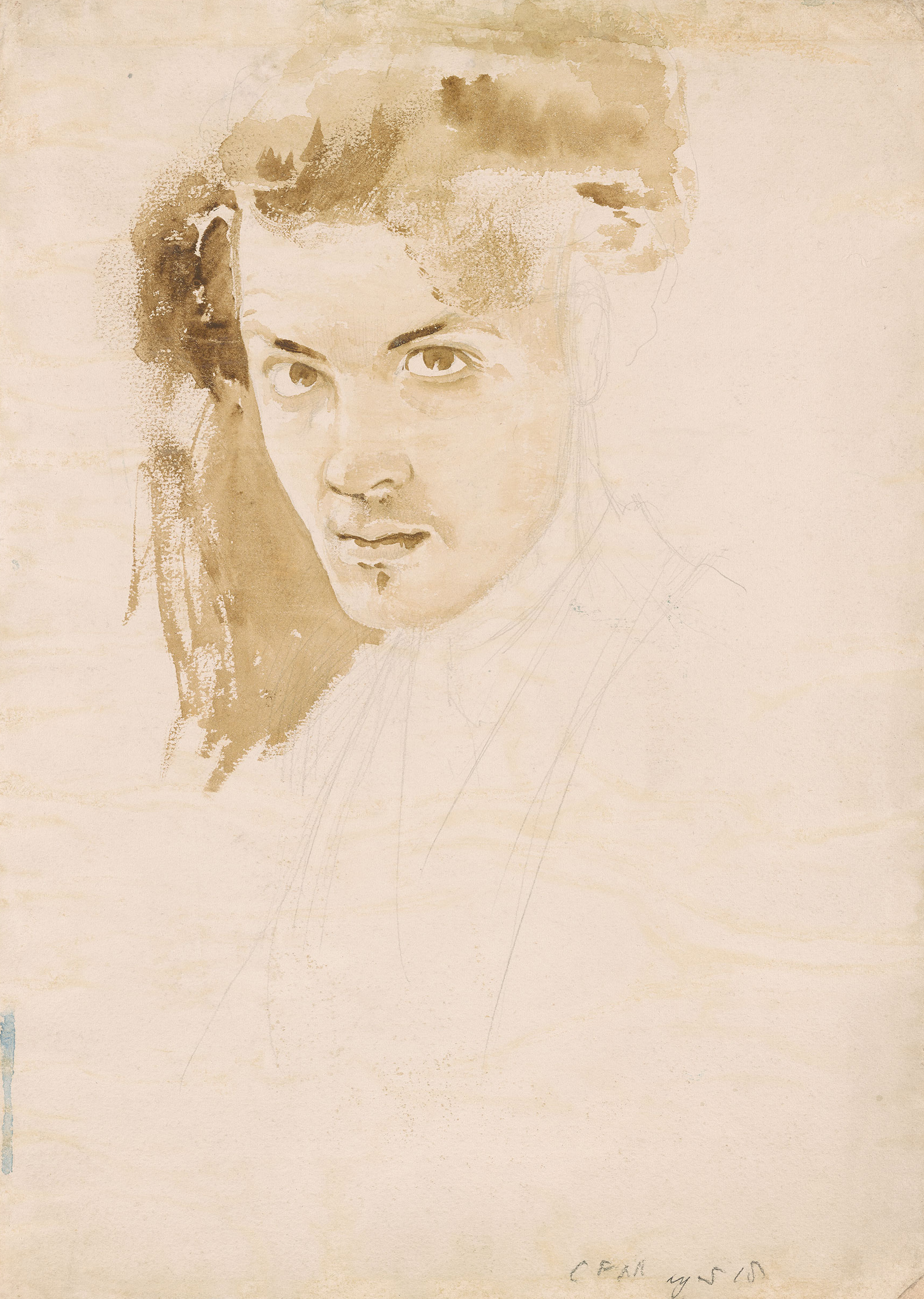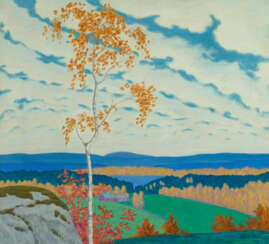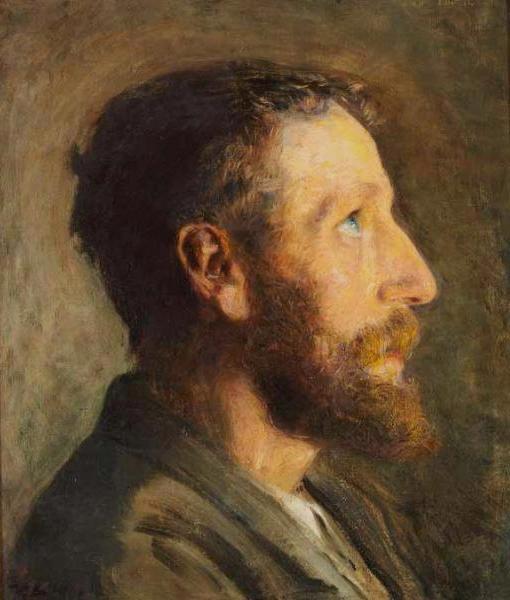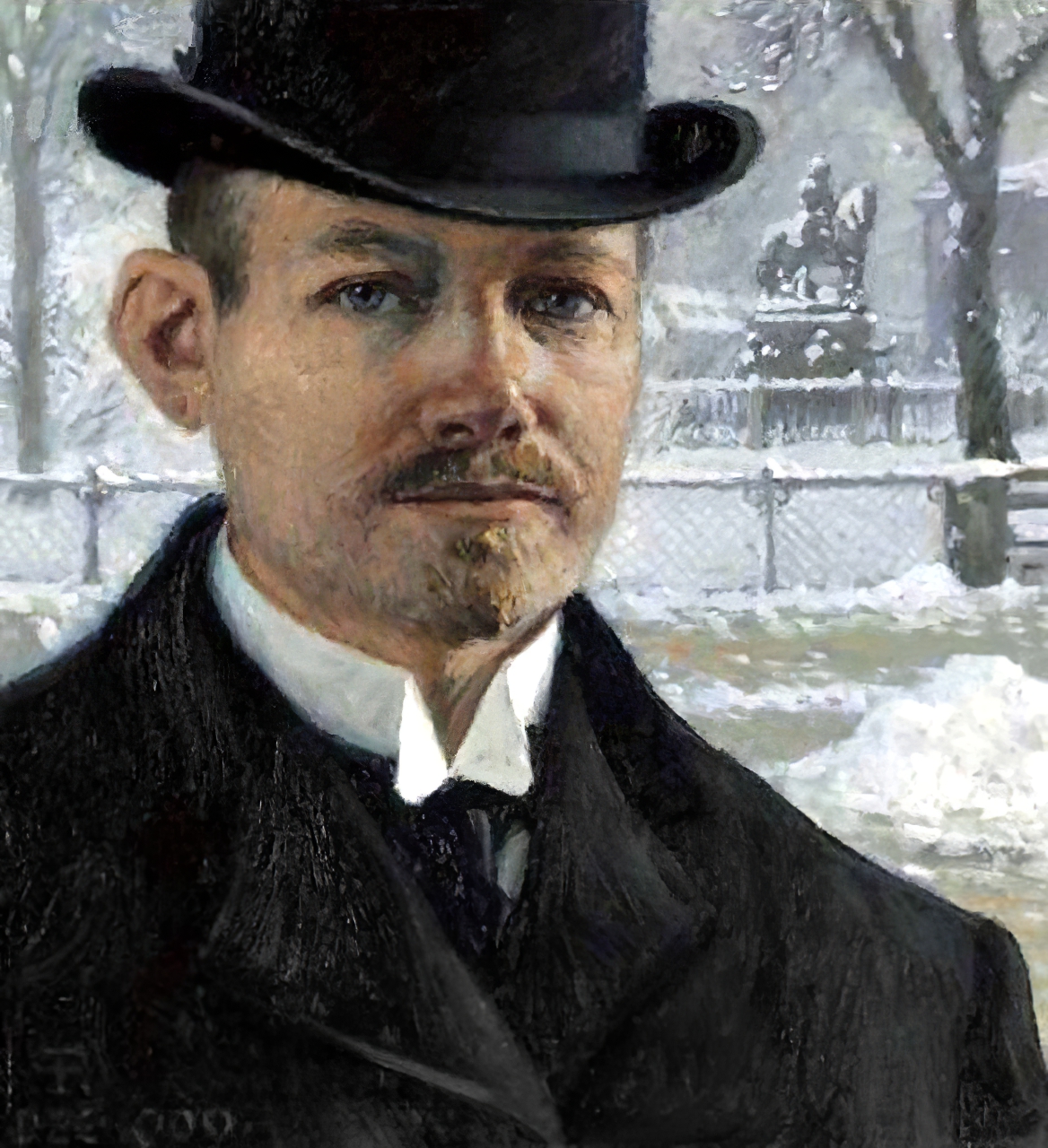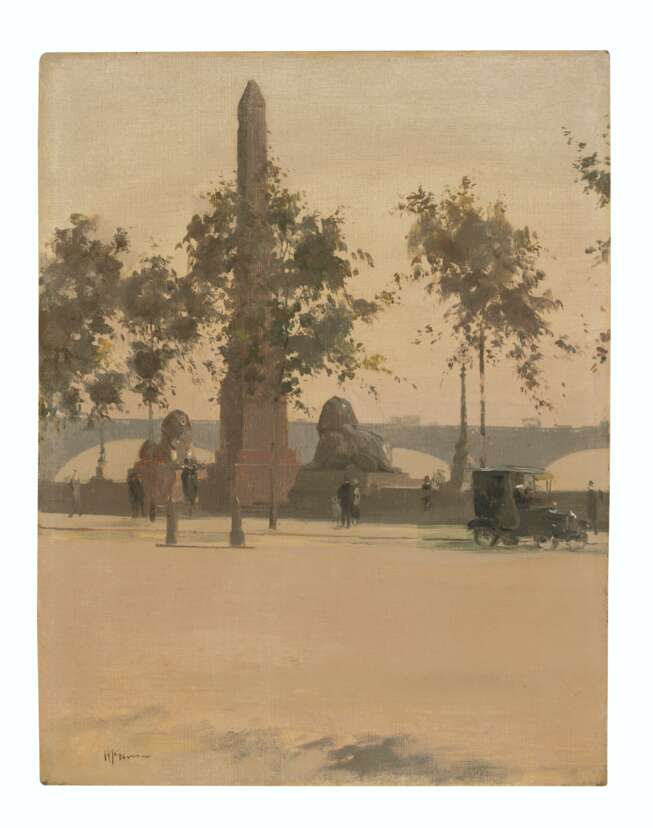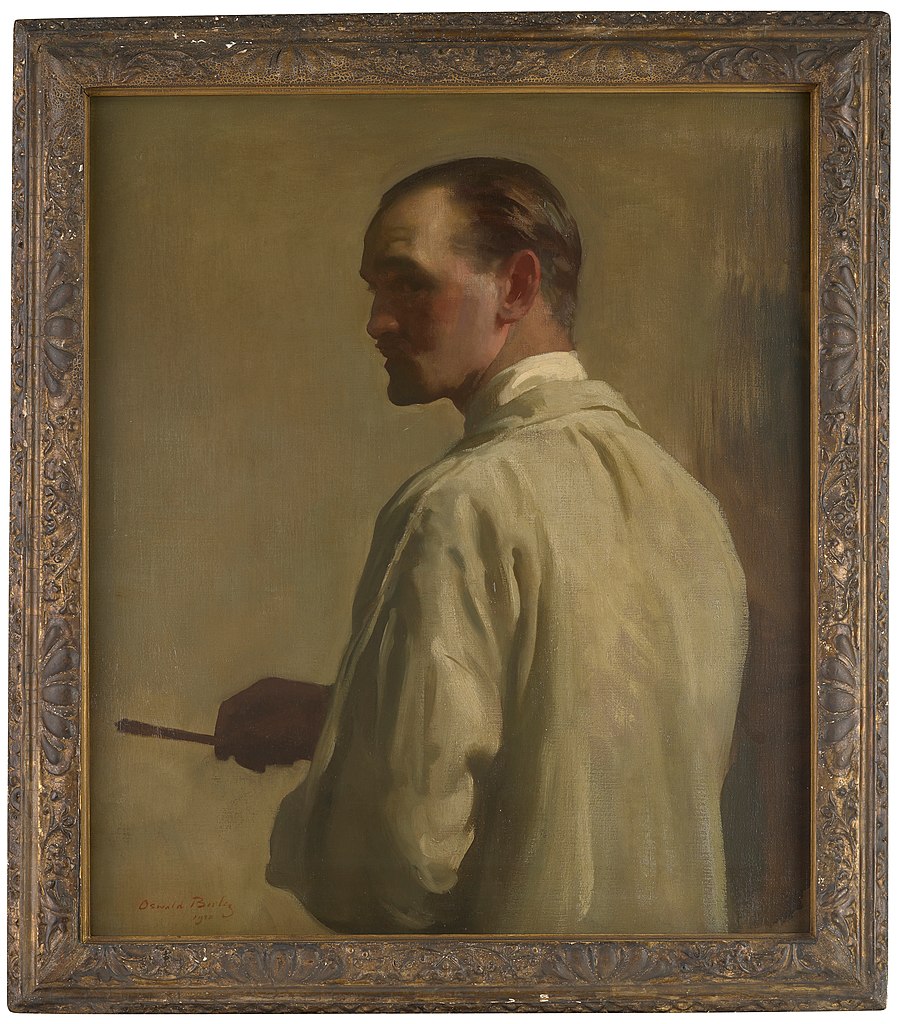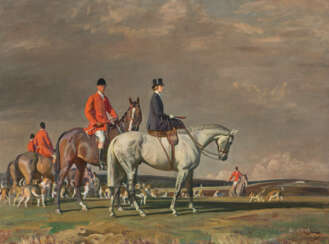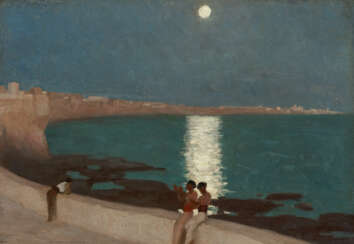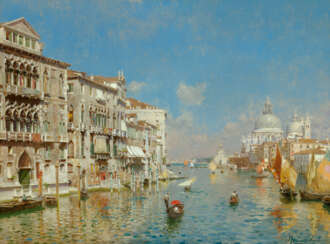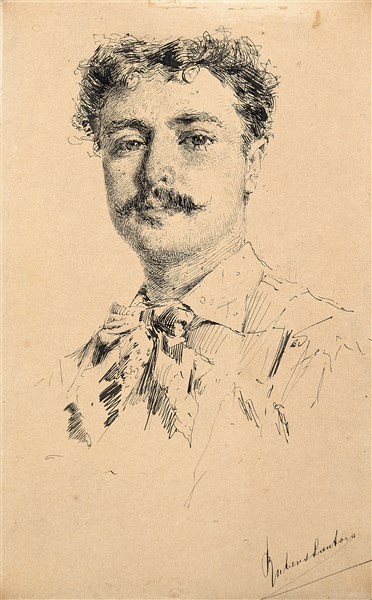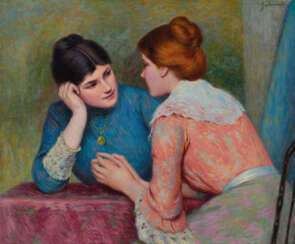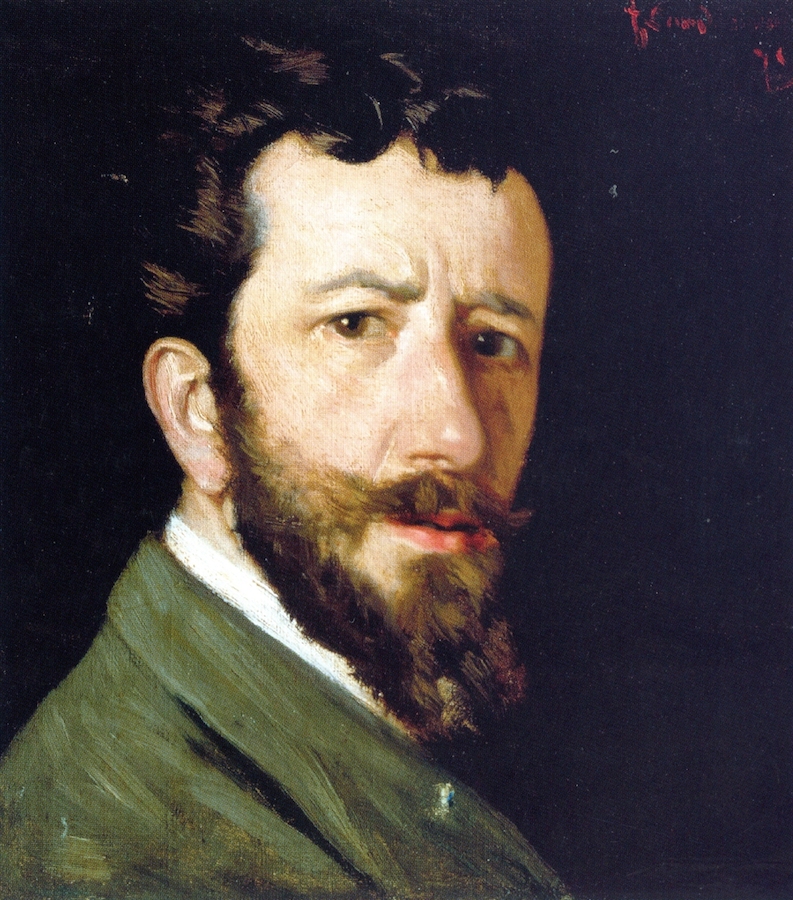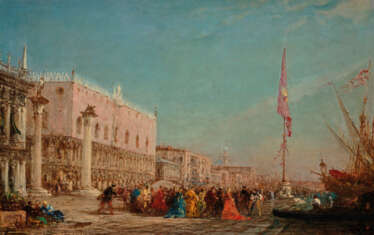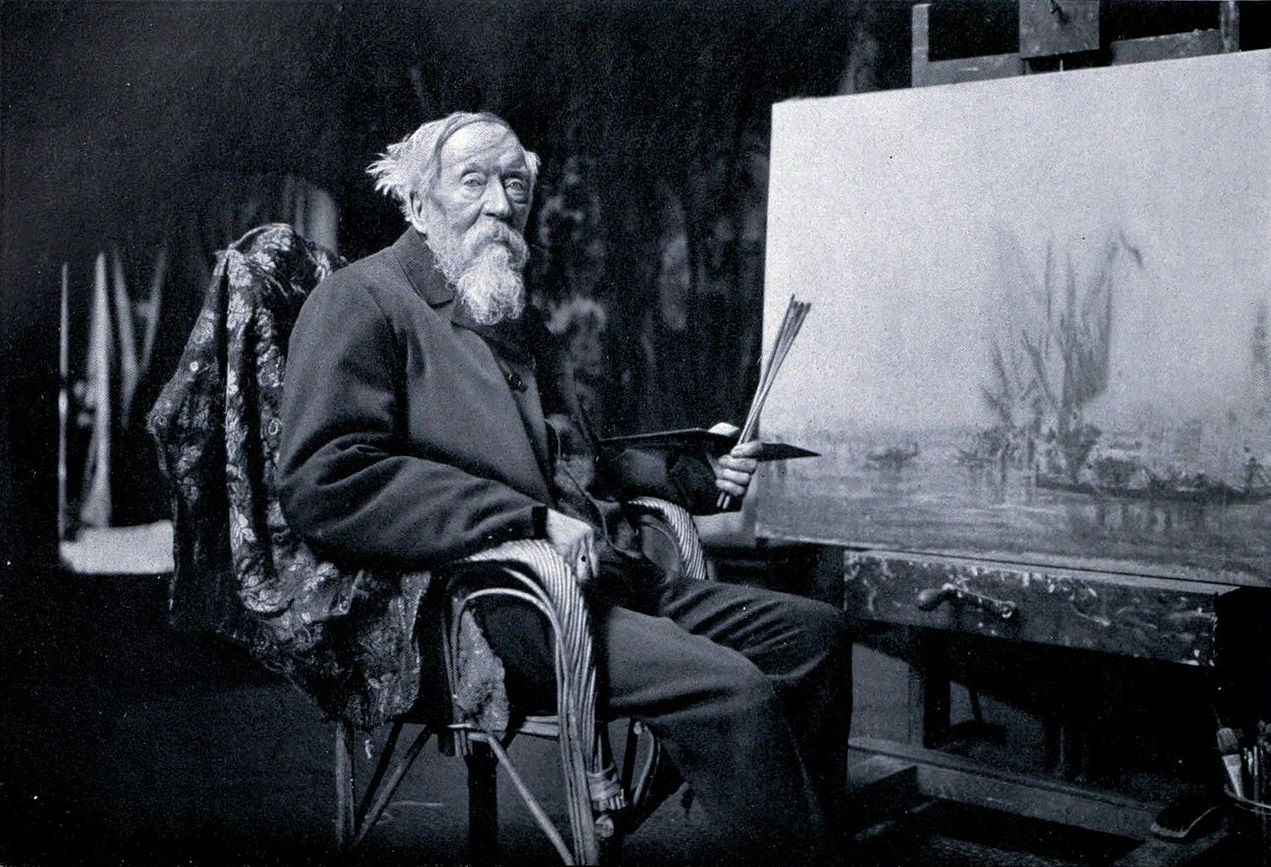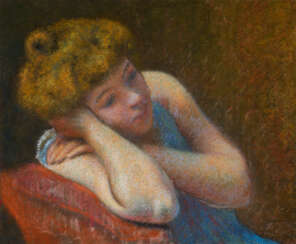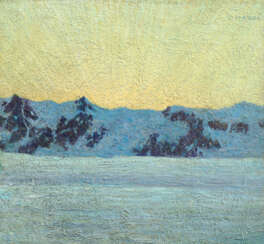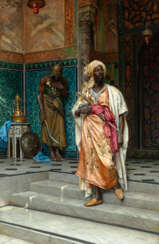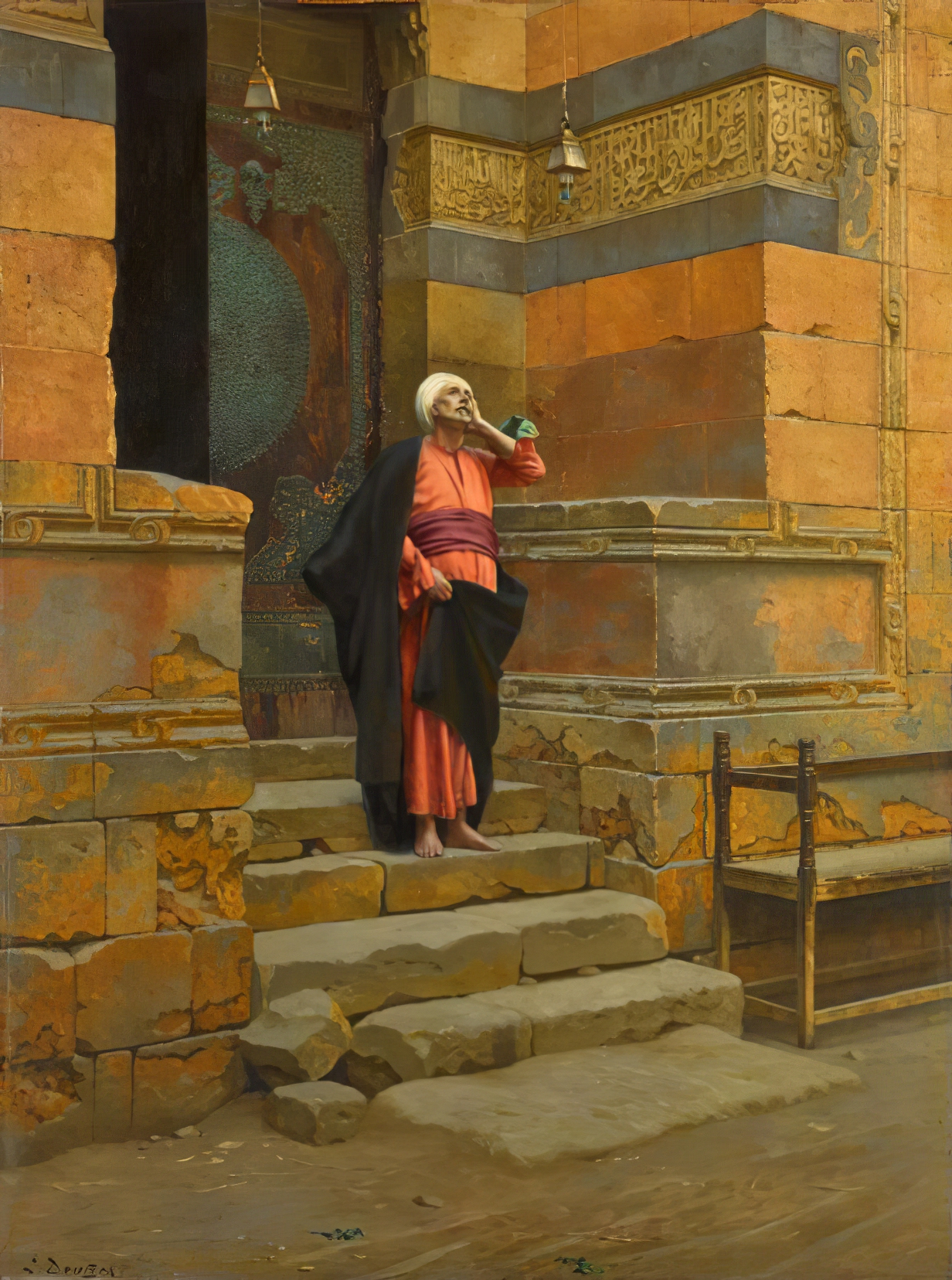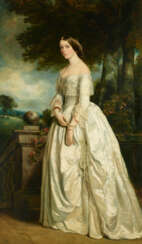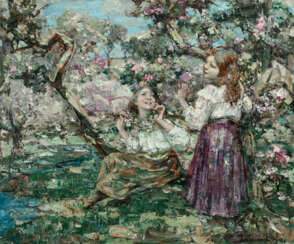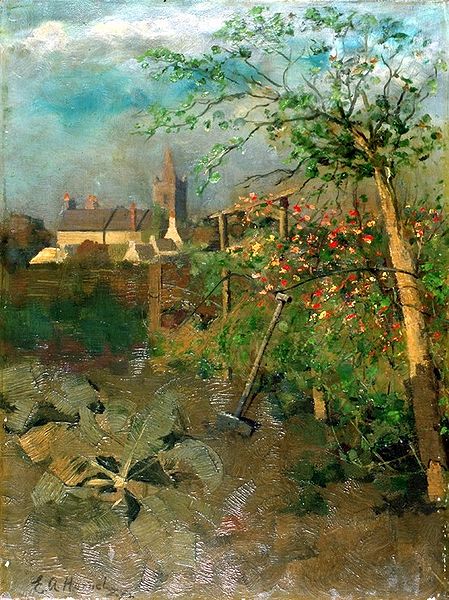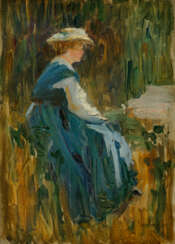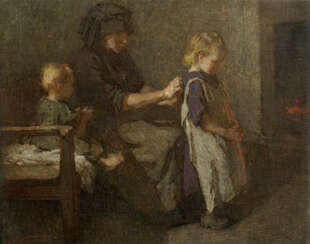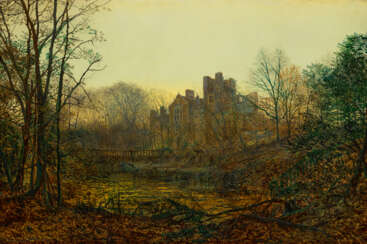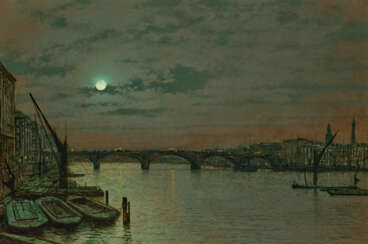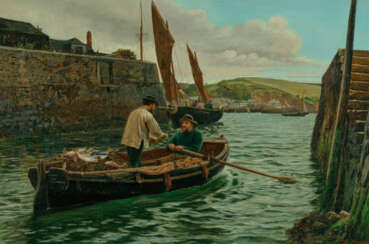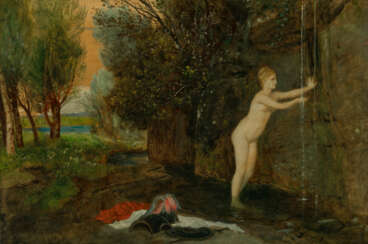
Paintings — British and European Art
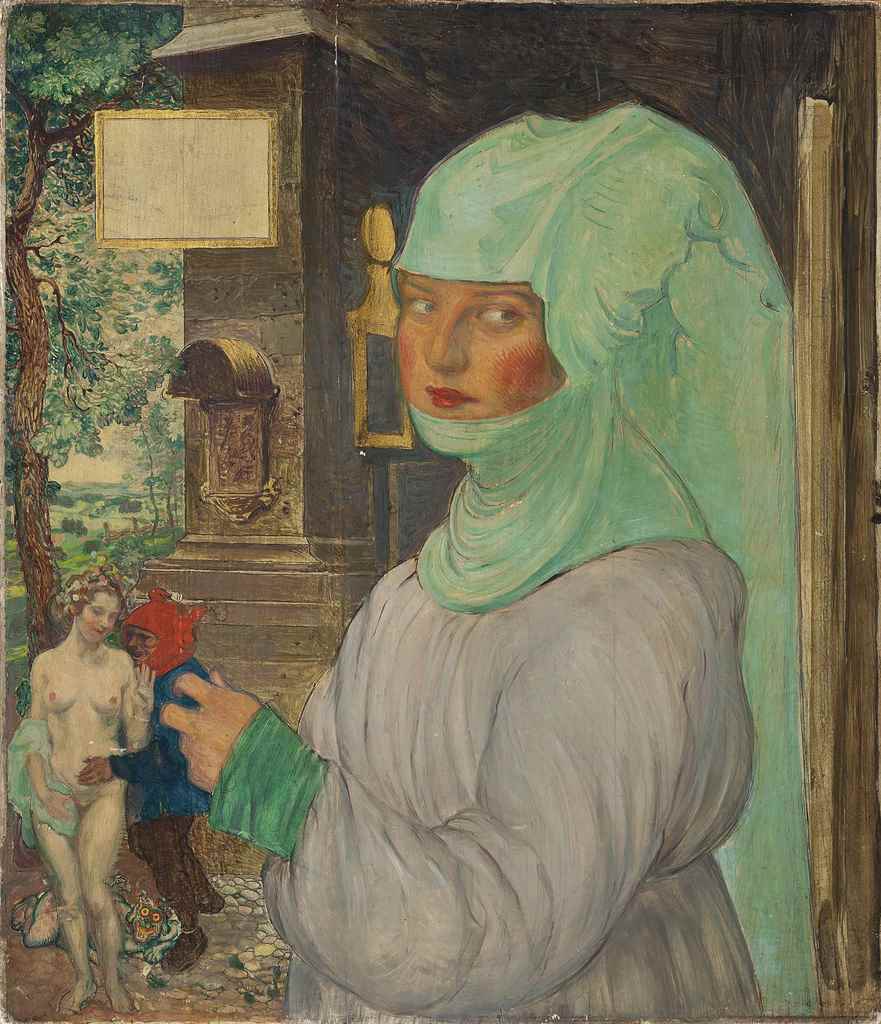
Sigmund Walter Hampel, born in Vienna in 1867 and passed away in 1949 at Nußdorf am Attersee, was an esteemed Austrian painter and draughtsman. The son of a glass painter, Hampel honed his artistic skills and knowledge of design, material, and technique in his father's workshop. His formal education at the Vienna Academy of Art under notable figures like August Eisenmenger and Heinrich von Angeli further refined his abilities, especially in delicate coloring and technical proficiency.
A significant period of Hampel's career was his membership in the Hagenbund, a Vienna-based artists' association, from 1900 to 1911. This association was known for its avant-garde approach and played a critical role in shaping modern art in Austria. Hampel's works are recognized for their diverse range of subjects and styles, including figurative works, still life, and portraiture.
Some of Hampel's notable works include "Interieur" (1903), "Zimmer In Einem Alten Forsthaus" (1905), "Spanische Tänzerin (Porträt der Mlle E.)" (1904), "Blumenstillleben" (1910), and "Der Zwerg und das Weib" (1902-1903). These artworks exemplify his versatile approach to art, capturing a range of emotions and narratives through his distinct artistic style.
Hampel's contributions to the art world, particularly in Austria, are significant. His works continue to be appreciated by art enthusiasts, collectors, and experts in art and antiques for their aesthetic value and historical significance.
To stay updated on the latest information, sales, and auction events related to Sigmund Walter Hampel, sign up for our newsletter. This subscription will provide regular updates exclusively about new opportunities related to Hampel's works, ensuring you don't miss out on any significant developments in this area.

Sigmund Walter Hampel, born in Vienna in 1867 and passed away in 1949 at Nußdorf am Attersee, was an esteemed Austrian painter and draughtsman. The son of a glass painter, Hampel honed his artistic skills and knowledge of design, material, and technique in his father's workshop. His formal education at the Vienna Academy of Art under notable figures like August Eisenmenger and Heinrich von Angeli further refined his abilities, especially in delicate coloring and technical proficiency.
A significant period of Hampel's career was his membership in the Hagenbund, a Vienna-based artists' association, from 1900 to 1911. This association was known for its avant-garde approach and played a critical role in shaping modern art in Austria. Hampel's works are recognized for their diverse range of subjects and styles, including figurative works, still life, and portraiture.
Some of Hampel's notable works include "Interieur" (1903), "Zimmer In Einem Alten Forsthaus" (1905), "Spanische Tänzerin (Porträt der Mlle E.)" (1904), "Blumenstillleben" (1910), and "Der Zwerg und das Weib" (1902-1903). These artworks exemplify his versatile approach to art, capturing a range of emotions and narratives through his distinct artistic style.
Hampel's contributions to the art world, particularly in Austria, are significant. His works continue to be appreciated by art enthusiasts, collectors, and experts in art and antiques for their aesthetic value and historical significance.
To stay updated on the latest information, sales, and auction events related to Sigmund Walter Hampel, sign up for our newsletter. This subscription will provide regular updates exclusively about new opportunities related to Hampel's works, ensuring you don't miss out on any significant developments in this area.
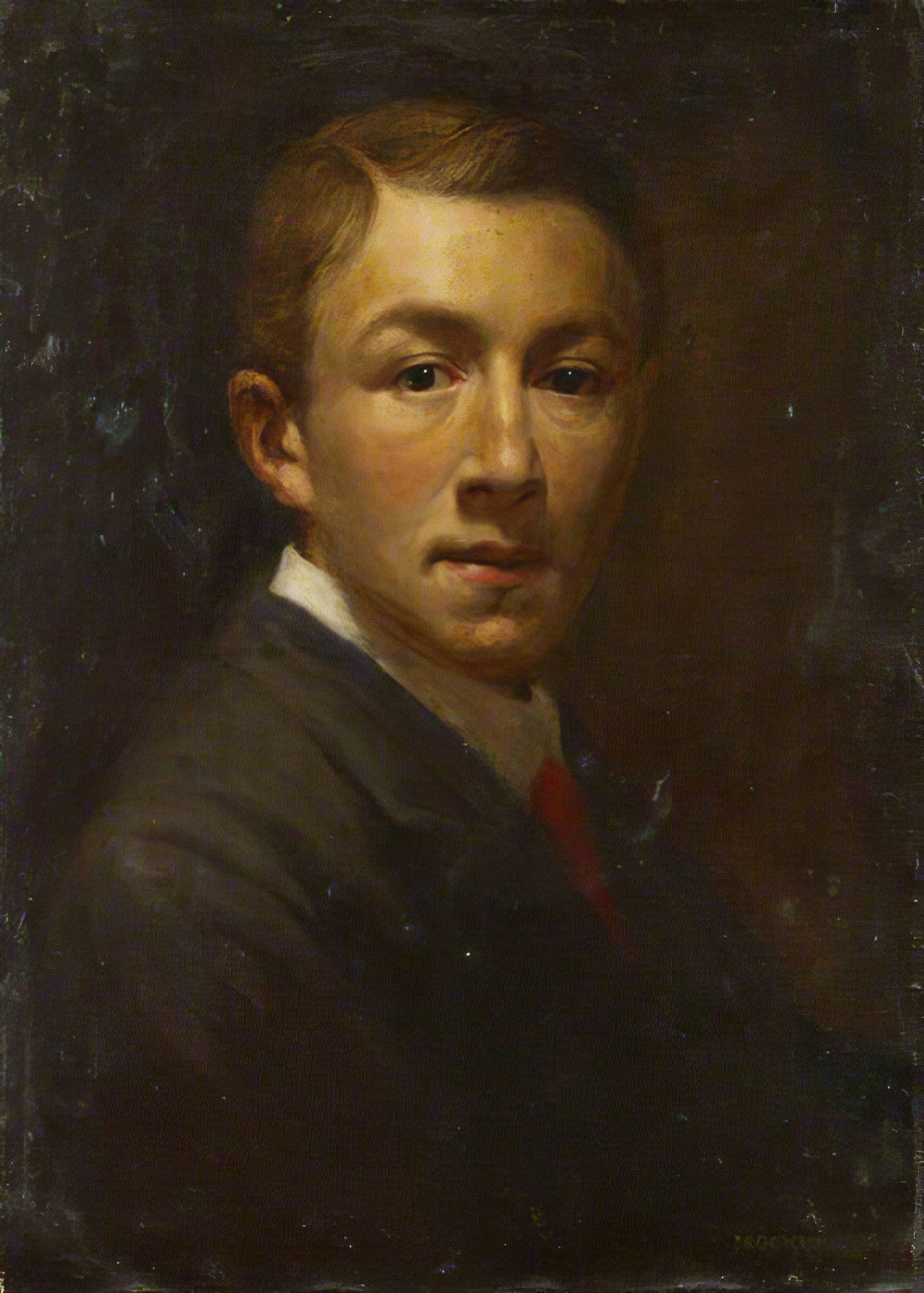
Gerald Leslie Brockhurst was a British painter and etcher.
During the 1930s and 1940s he was celebrated as a portraitist, painting society figures such as Marlene Dietrich and the Duchess of Windsor. Today he is best known for his small etched prints of beautiful, idealized women — many of them modelled by his first and second wives.
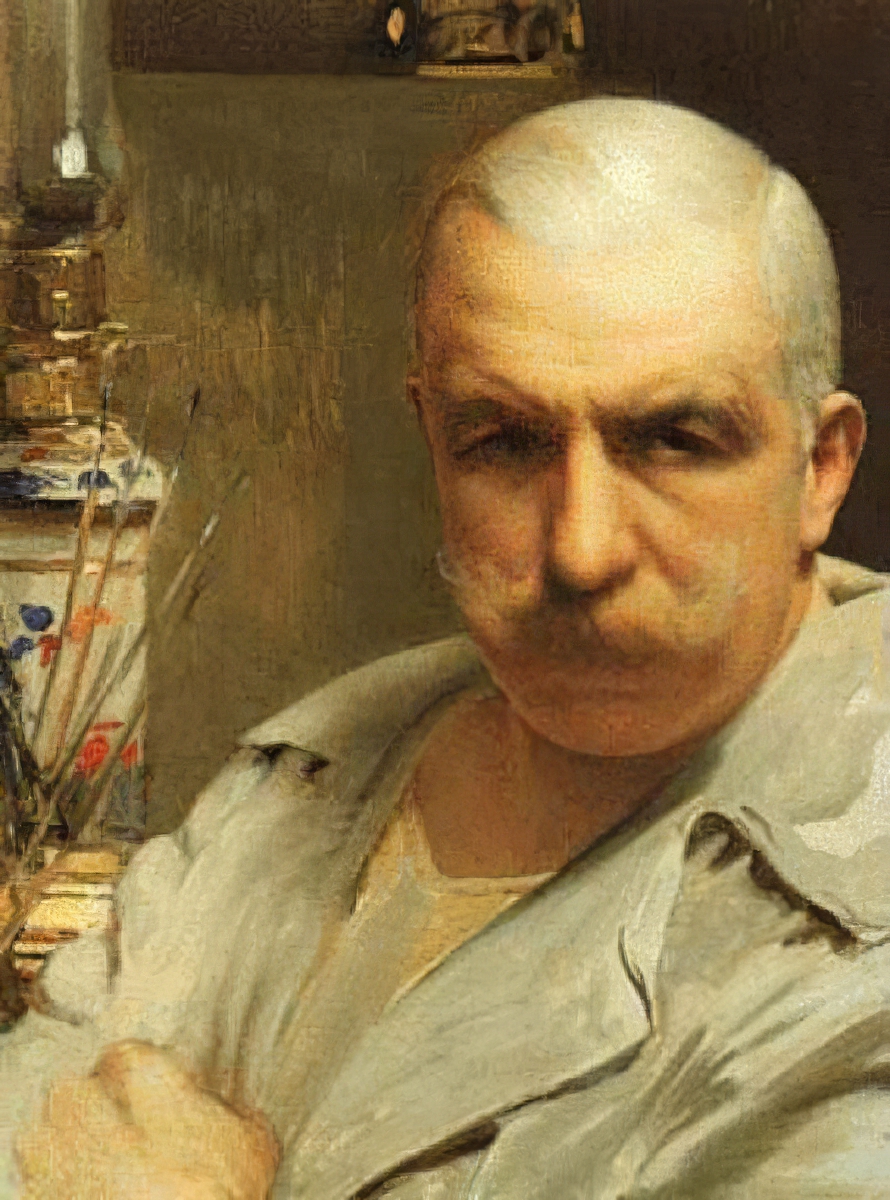
Vittorio Matteo Corcos was an Italian painter, known for his portraits. Many of his genre works depict winsome and finely dressed young men and women, in moments of repose and recreation.
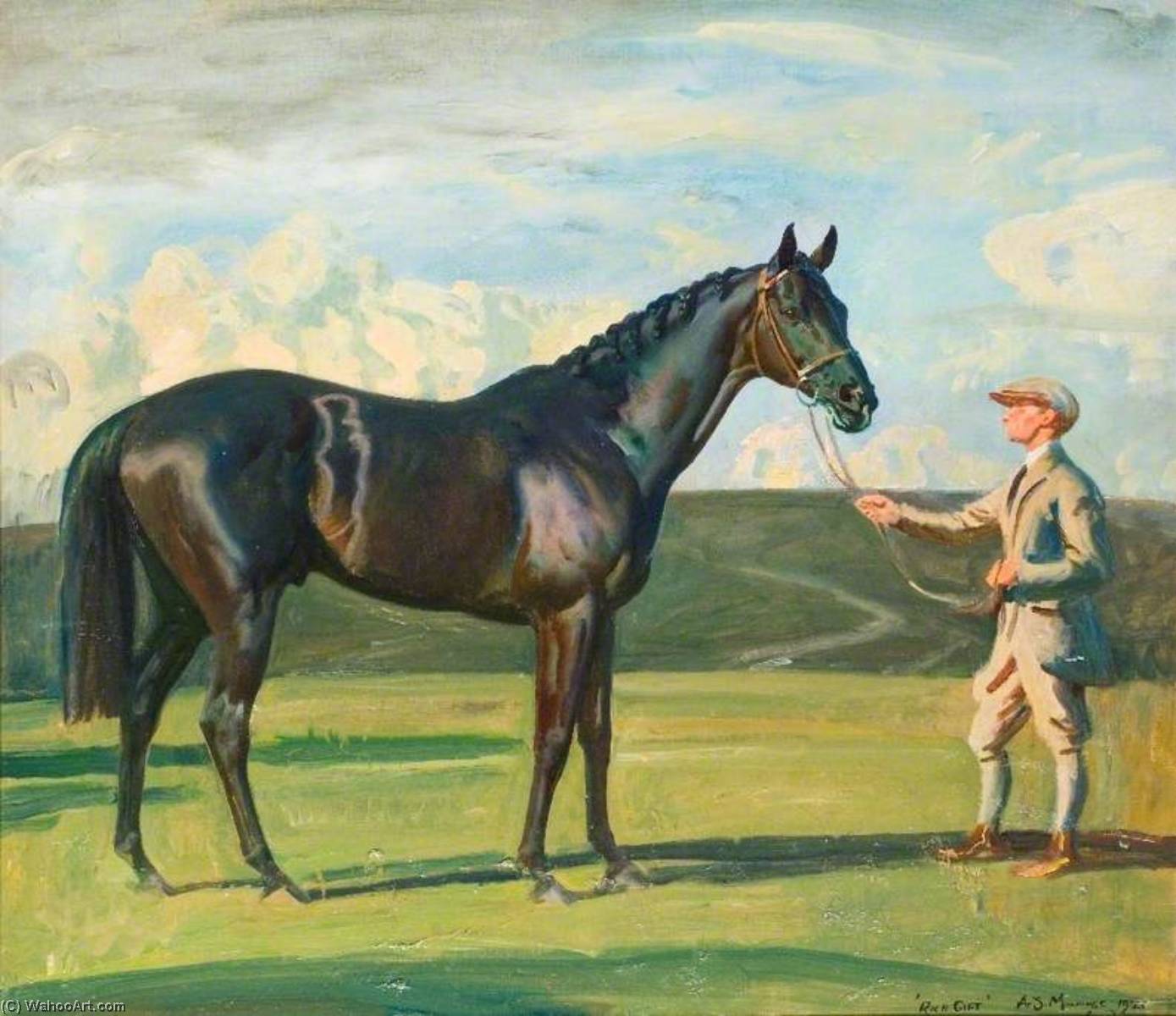
Alfred James Munnings was known as one of England's finest painters of horses, and as an outspoken critic of Modernism. Engaged by Lord Beaverbrook's Canadian War Memorials Fund, he earned several prestigious commissions after the Great War that made him wealthy. Between 1912 and 1914 he was a member of the Newlyn School of artists. His work was part of the art competitions at the 1928 Summer Olympics, the 1932 Summer Olympics, and the 1948 Summer Olympics.
Munnings was president of the Royal Academy of Arts from 1944 until his death.

Alfred James Munnings was known as one of England's finest painters of horses, and as an outspoken critic of Modernism. Engaged by Lord Beaverbrook's Canadian War Memorials Fund, he earned several prestigious commissions after the Great War that made him wealthy. Between 1912 and 1914 he was a member of the Newlyn School of artists. His work was part of the art competitions at the 1928 Summer Olympics, the 1932 Summer Olympics, and the 1948 Summer Olympics.
Munnings was president of the Royal Academy of Arts from 1944 until his death.
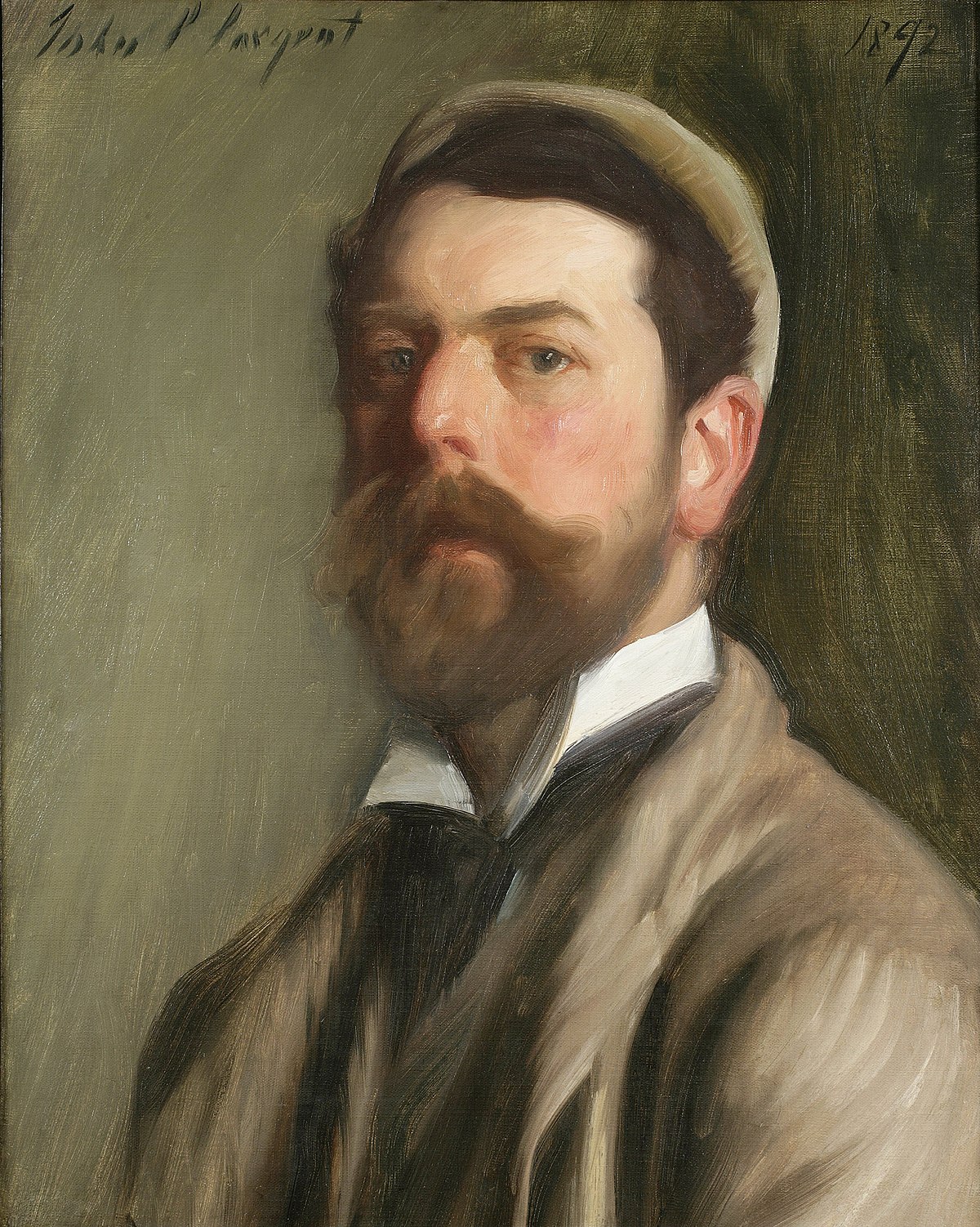
John Singer Sargent was an American artist celebrated for his captivating portraits, which mirrored the luxury of the Edwardian era. Born to American parents in Florence, Italy, Sargent was a well-traveled individual, fluent in multiple languages, and exposed to European art from a young age. His early artistic training came under the tutelage of Carolus-Duran in Paris, which significantly influenced his style and approach to art. Sargent's work, characterized by its striking realism and attention to detail, gained international acclaim, especially among the aristocracy in England and the United States.
Noteworthy is John Singer Sargent's "Carnation, Lily, Lily, Rose," a piece that, after its display at the Royal Academy in 1887, solidified his status in the London art scene. This painting, along with many others, showcases his ability to capture the essence of his subjects, earning him numerous commissions from prominent figures of his time. However, by the early 20th century, Sargent shifted his focus to watercolors and murals, seeking respite from the demands of portrait commissions. His mural works, like those for the Boston Public Library, highlight his versatility and commitment to art beyond portraiture.
For collectors and art experts, understanding John Singer Sargent's journey—from his early days in Florence and Paris to his ultimate success as a portraitist and muralist—offers valuable insights into his artistic evolution and the historical context of his work. His pieces, housed in prestigious institutions worldwide, continue to captivate audiences with their elegance and technical prowess.
If you're keen on staying updated with events and sales related to John Singer Sargent's art, consider signing up for updates. This subscription will keep you informed about new product sales and auction events specifically related to Sargent's works, ensuring you don't miss out on valuable opportunities.
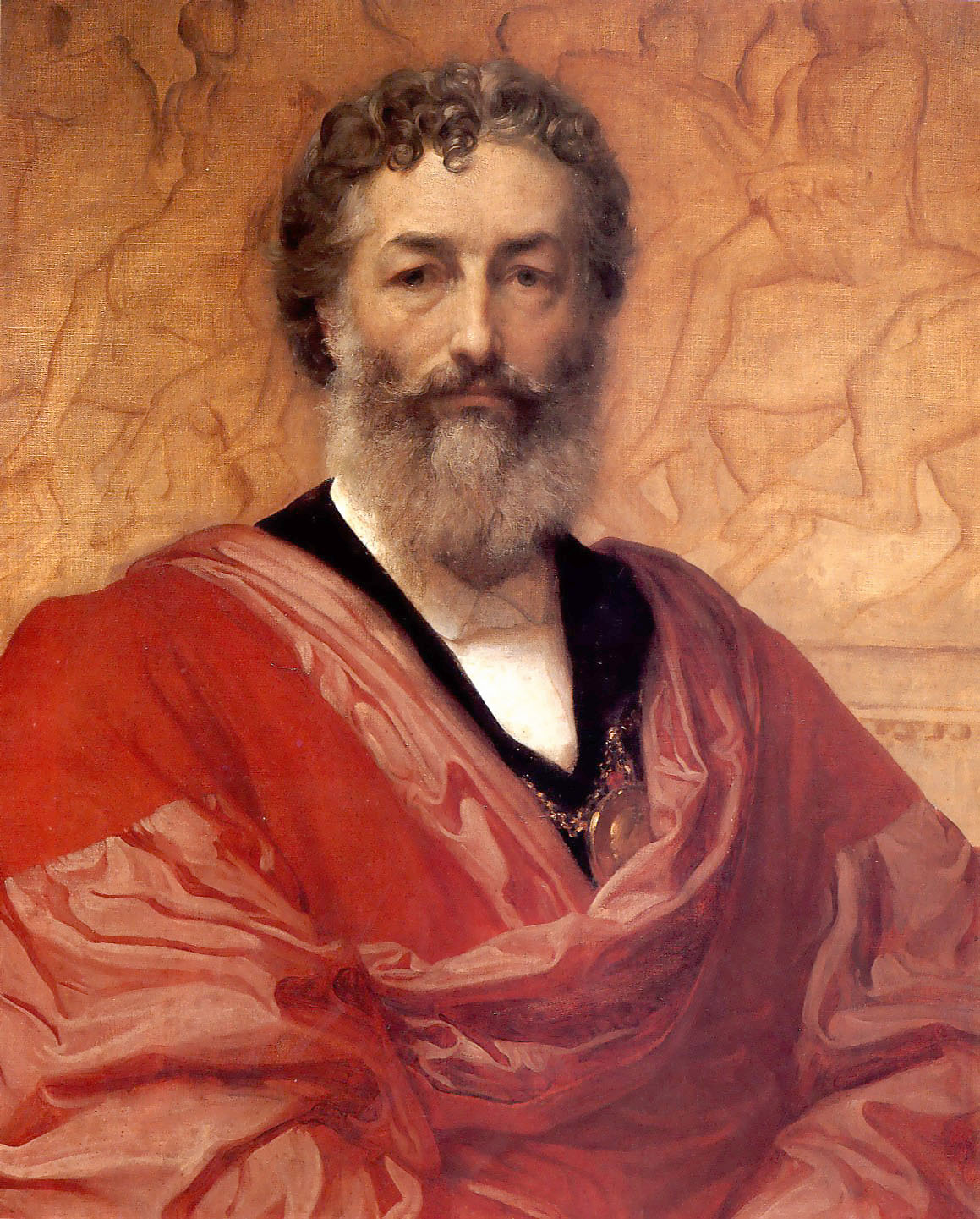
Frederic Leighton was a distinguished British artist renowned for his contributions to painting and sculpture during the Victorian era. His works, characterized by their classical themes and meticulous detail, have garnered appreciation from art collectors and historians alike. Notable for being the first painter to receive a peerage, Leighton's legacy in the art world is significant.
Frederic Leighton's art, particularly his paintings like "Flaming June" and "The Return of Persephone," showcases his mastery in depicting classical and mythological subjects with a unique blend of realism and idealism. His sculptures, such as "An Athlete Wrestling with a Python" and "The Sluggard," played a pivotal role in initiating the New Sculpture movement, emphasizing naturalism and dynamic forms.
Despite his illustrious career, Frederic Leighton's personal life remained private, with ongoing debates about his relationships and sexuality. His London home, now the Leighton House Museum, offers a glimpse into his artistic world, housing many of his works and collections that influenced his creations.
For art collectors and experts, Frederic Leighton's oeuvre represents a blend of academic tradition and innovative expression, making his works highly sought after in the realms of art and antiques. To stay informed about exhibitions and auction events featuring Frederic Leighton's art, subscribing to updates can be a valuable resource for enthusiasts eager to explore and acquire pieces from this influential Victorian artist.
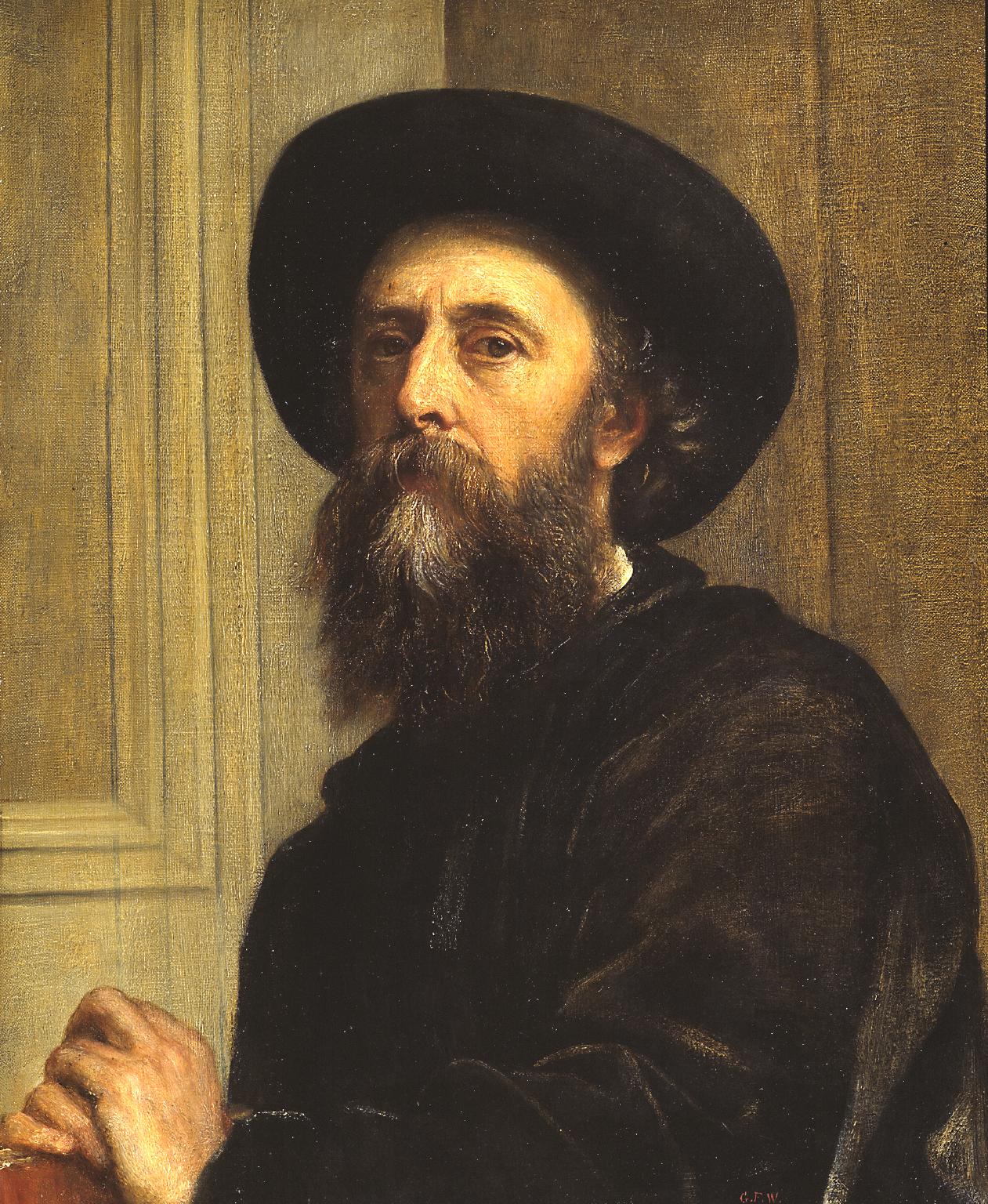
George Frederic Watts was a distinguished British painter and sculptor associated with the Symbolist movement, celebrated for his allegorical works such as "Hope" and "Love and Life." Born in 1817, Watts's career spanned the Victorian era, during which he developed a style that sought to imbue his works with moral and philosophical depth. His ambition was to affect the viewer's mind through "nobility of line and color," aiming to elevate art to a medium of serious reflection and commentary on humanity's condition.
George Frederic Watts's early influences included the Elgin Marbles and the works of Titian, which inspired him to strive for a grandeur in his art that was both morally uplifting and aesthetically profound. He was a part of the vibrant cultural milieu of the Victorian era, mingling with notable figures of the time in the Prinsep circle of bohemians and contributing significantly to the artistic and intellectual life of 19th-century Britain.
Among Watts's most celebrated works are "Hope," featuring a blindfolded figure with a lyre, and "The Sower of the Systems," a visionary piece that prefigured abstract painting and explored themes of creation and the cosmos. This latter work, completed towards the end of his life, exemplifies Watts's lifelong fascination with the interplay between art, science, and spirituality.
George Frederic Watts's legacy is preserved in the Watts Gallery in Compton, Surrey, dedicated to his work, and through his contributions to public art, including the monumental sculpture "Physical Energy" in Kensington Gardens, London. His portraits of prominent Victorians, which include political, literary, and cultural figures, remain highly regarded for their insight and depth.
For those interested in the intersections of art, culture, and history, George Frederic Watts's work offers a rich exploration of Victorian values, aspirations, and anxieties. His enduring influence on British art and his role in the Symbolist movement make his work a key subject of study for collectors and experts in art and antiques.
To stay informed about exhibitions, sales, and events related to George Frederic Watts, signing up for updates is recommended. This will ensure that enthusiasts and collectors alike are always up-to-date on opportunities to engage with Watts's impactful legacy.
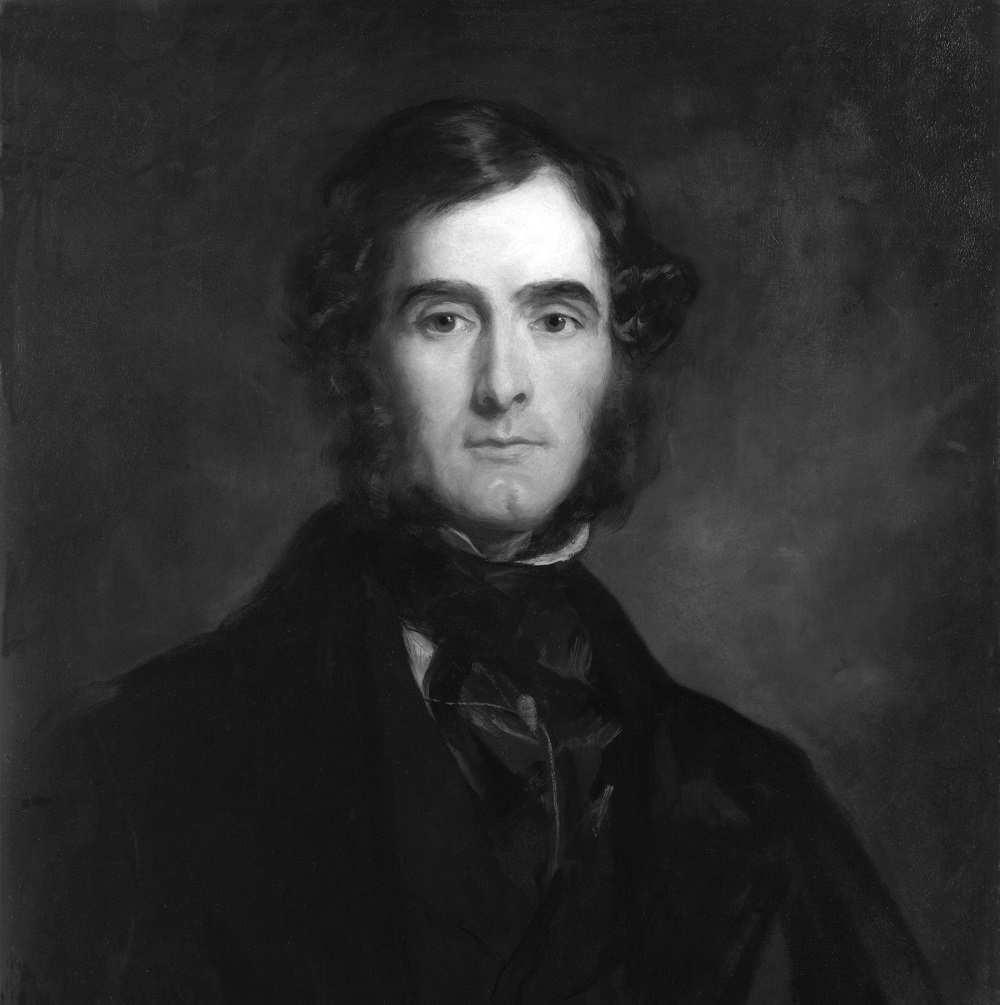
Francis Grant was a Scottish portrait painter who painted Queen Victoria and many distinguished British aristocratic and political figures. He served as President of the Royal Academy.
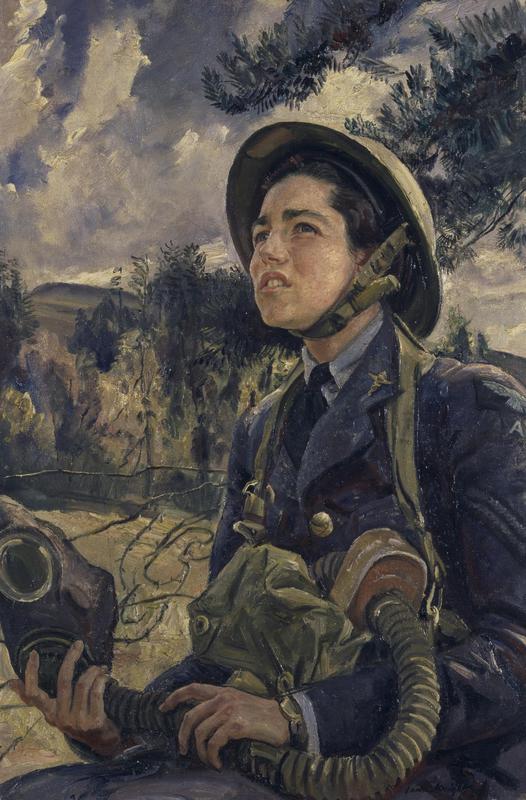
Dame Laura Knight was an English artist who worked in oils, watercolours, etching, engraving and drypoint. Knight was a painter in the figurative, realist tradition, who embraced English Impressionism. In her long career, Knight was among the most successful and popular painters in Britain. Her success in the male-dominated British art establishment paved the way for greater status and recognition for women artists.
In 1929 she was created a Dame, and in 1936 became the second woman elected to full membership of the Royal Academy. Her large retrospective exhibition at the Royal Academy in 1965 was the first for a woman. Knight was known for painting amidst the world of the theatre and ballet in London, and for being a war artist during the Second World War. She was also greatly interested in, and inspired by, marginalised communities and individuals, including Romani people and circus performers.

Dame Laura Knight was an English artist who worked in oils, watercolours, etching, engraving and drypoint. Knight was a painter in the figurative, realist tradition, who embraced English Impressionism. In her long career, Knight was among the most successful and popular painters in Britain. Her success in the male-dominated British art establishment paved the way for greater status and recognition for women artists.
In 1929 she was created a Dame, and in 1936 became the second woman elected to full membership of the Royal Academy. Her large retrospective exhibition at the Royal Academy in 1965 was the first for a woman. Knight was known for painting amidst the world of the theatre and ballet in London, and for being a war artist during the Second World War. She was also greatly interested in, and inspired by, marginalised communities and individuals, including Romani people and circus performers.
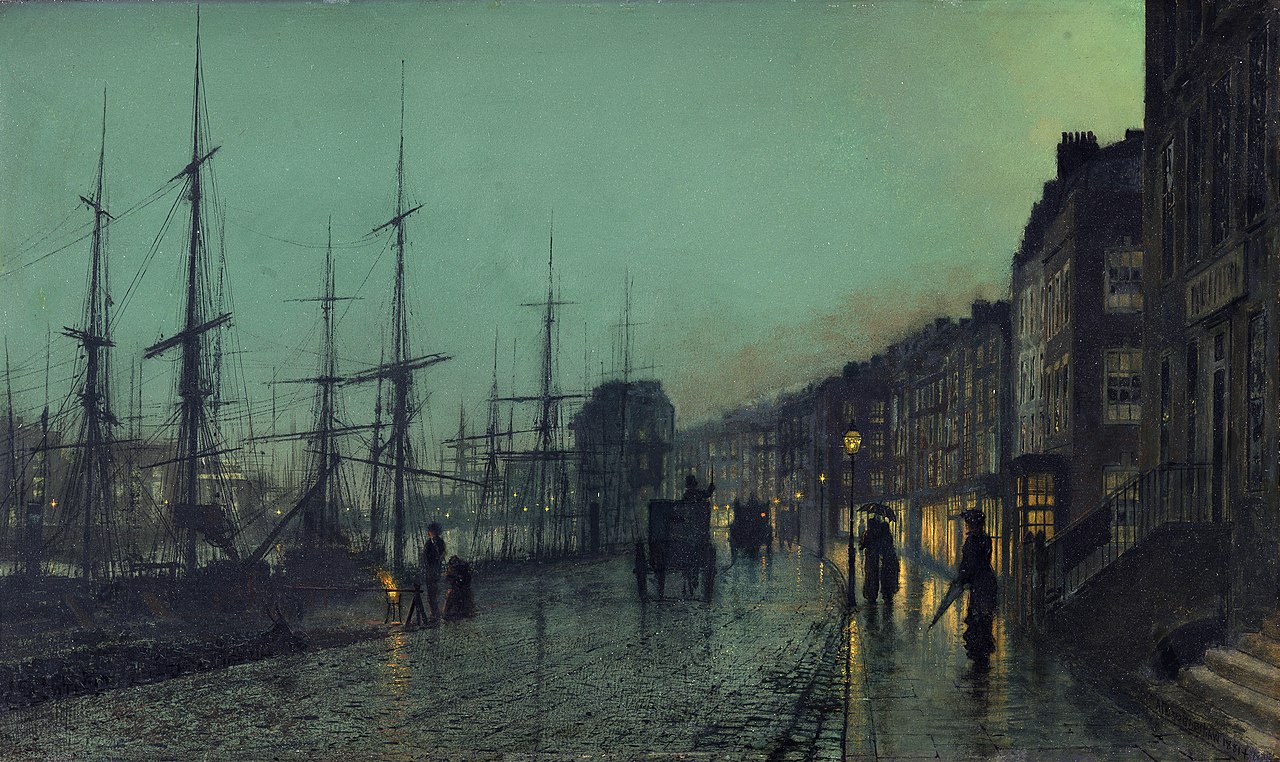
John Atkinson Grimshaw was an English Victorian-era artist best known for his nocturnal scenes of urban landscapes. He was called a «remarkable and imaginative painter» by the critic and historian Christopher Wood in Victorian Painting (1999).
Grimshaw's love for realism stemmed from a passion for photography, which would eventually lend itself to the creative process. Though entirely self-taught, he is known to have used a camera obscura or lenses to project scenes onto canvas, which made up for his shortcomings as a draughtsman and his imperfect knowledge of perspective. This technique, which Caravaggio and Vermeer may also have used, was condemned by a number of his contemporaries who believed it demonstrated less skill than painting by eye, with some claiming that his paintings appeared to «show no marks of handling or brushwork», while others "were doubtful whether they could be accepted as paintings at all". However, many recognised his mastery of colour, lighting and shadow, as well as his unique ability to provoke strong emotional responses in the viewer. James McNeill Whistler, who Grimshaw worked with in his Chelsea studios, stated, «I considered myself the inventor of nocturnes until I saw Grimmy's moonlit pictures».

John Atkinson Grimshaw was an English Victorian-era artist best known for his nocturnal scenes of urban landscapes. He was called a «remarkable and imaginative painter» by the critic and historian Christopher Wood in Victorian Painting (1999).
Grimshaw's love for realism stemmed from a passion for photography, which would eventually lend itself to the creative process. Though entirely self-taught, he is known to have used a camera obscura or lenses to project scenes onto canvas, which made up for his shortcomings as a draughtsman and his imperfect knowledge of perspective. This technique, which Caravaggio and Vermeer may also have used, was condemned by a number of his contemporaries who believed it demonstrated less skill than painting by eye, with some claiming that his paintings appeared to «show no marks of handling or brushwork», while others "were doubtful whether they could be accepted as paintings at all". However, many recognised his mastery of colour, lighting and shadow, as well as his unique ability to provoke strong emotional responses in the viewer. James McNeill Whistler, who Grimshaw worked with in his Chelsea studios, stated, «I considered myself the inventor of nocturnes until I saw Grimmy's moonlit pictures».
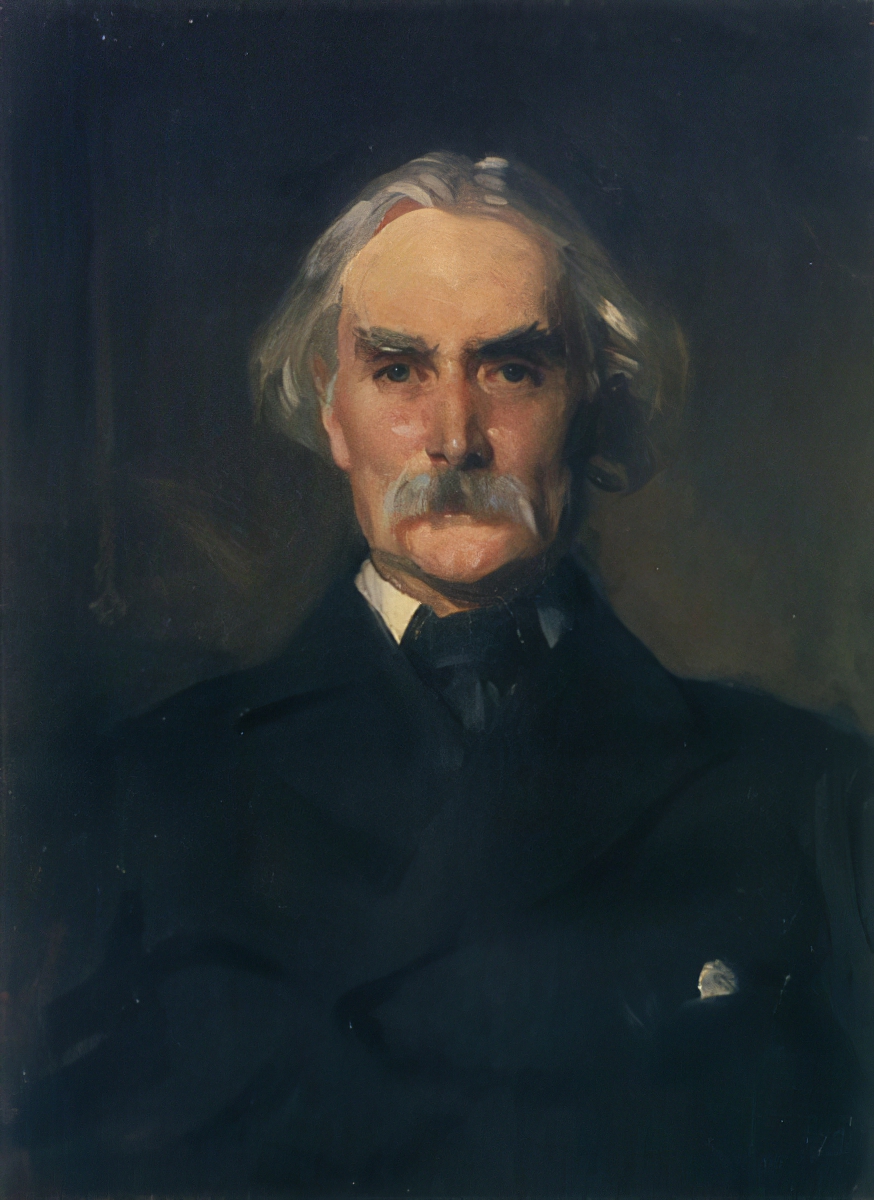
Charles Napier Hemy was a British genre and marine painter.
Hemy was elected an Associate of the Royal Academy in 1898 and an Academician in 1910. He was also honoured as an Associate of the Royal Society of Painters in Water Colours in 1890, and became a full member in 1897.
,_Selbstportrait_(1873).jpg)
Arnold Böcklin was a Swiss symbolist painter.
Influenced by Romanticism, Böcklin's symbolist use of imagery derived from mythology and legend often overlapped with the aesthetic of the Pre-Raphaelites. Many of his paintings are imaginative interpretations of the classical world, or portray mythological subjects in settings involving classical architecture, often allegorically exploring death and mortality in the context of a strange, fantasy world.


